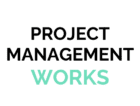A recent project that was done for a small business I know was a good example of why formal User Acceptance Testing (UAT) is essential for all projects no matter what their size and complexity – even those small projects that are more of a makeover than a full-blown project.
This particular project involved “re-skinning” a website – essentially taking the text content that already existed and presenting it in a much more up to date form. The underlying functionality of the site was not being changed so, on the face of it, a fairly simple task. But as anyone involved in web design knows it really is never that simple.
By adding new layouts and menus they were introducing uncertainties into the project and the need for a full UAT testing process should have recognised at the outset but the stakeholders were all persuaded that a simple check of the site to confirm it was visually acceptable would be enough.
Of course the makeover soon started to involve extra changes as errors in the existing text content were noticed and, in addition, existing images and videos began to look dated alonside the more contemporary design so new images and videos were produced – yet more uncertainty. These changes were all controlled and it was recognised that the scope of the project was being extended but the client was happy with that – with both the extra time and cost – to get it right.
And the functional pages were still not being changed i.e. those pages that allowed data entry, made calculations etc. – it was only the pages presenting information that were being changed and so there was still no recognition of the need for a full testing process.
Months past the deadline the new site was finally ready for a pre-release check and – no surprise – this threw up a huge list of issues. Some of which were:
- Changes to the menus led to inaccurate indicators showing which page a user was on
- Various menu items took the user to the wrong page
- Changes to text had removed important hyperlinks to other content/pages
- Changes to text boxes overlaying images affected what could be seen of the underlying image
- New images of different sizes didn’t work well with the new layout
Perhaps these problems should all have been anticipated but what was more surprising was that pages that had not been changed were unaccountably displaying old versions – somewhere along the line a code change called up old versions which still existed but should probably have been archived.
All in all, a bit of a mess, but a good example of how easy it is to assume certain parts of a system should not need testing because they have not been changed; but changing related parts of the system can never guarantee that the whole will function correctly.
Of course, in the end a full suite of tests was devised and completed but if more testing had been done at earlier stages in the project it would have been quicker, simpler and cheaper to fix the problems as they arose.





Pingback: Making Testing an Integral Part of a Project